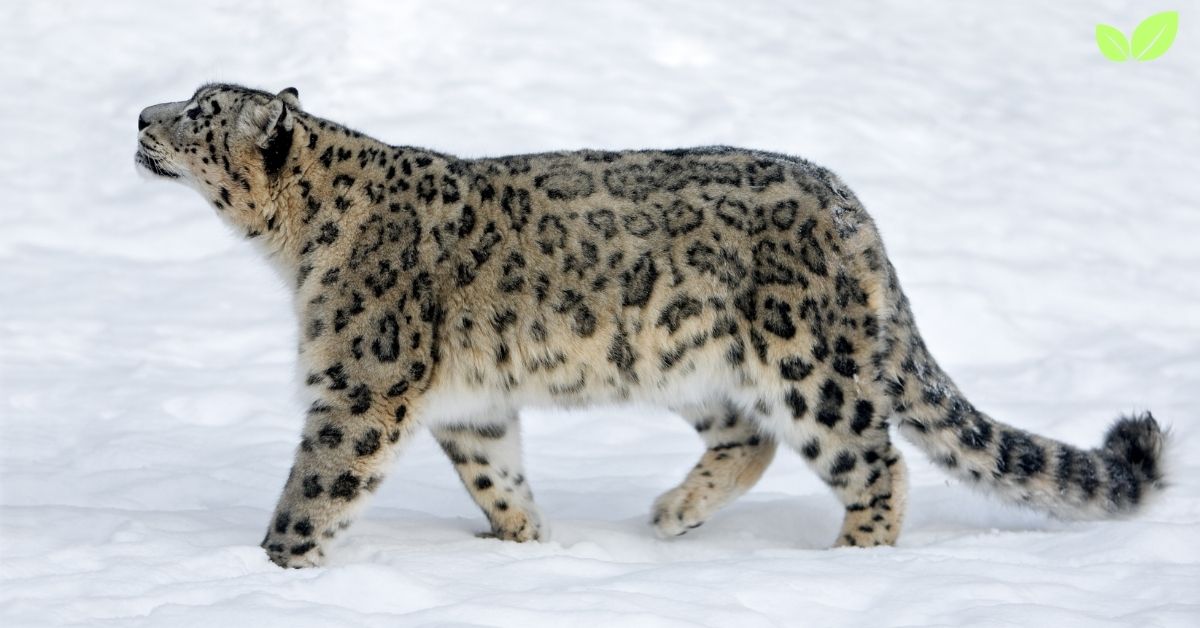The Ice leopard correctly called Snow Leopard, scientifically known as (Panthera uncia) often referred to as the “ghost of the mountains,” is a majestic big cat native to the high-altitude regions of Central and South Asia. Its elusive nature, combined with its strikingly beautiful, thick, white-gray coat and powerful presence, makes the snow leopard one of the most captivating yet vulnerable species in the world. Ice leopards are perfectly adapted to the harsh, frigid environments of mountain ranges such as the Himalayas, the Tibetan Plateau, and the Altai Mountains. This article explores the environmental niche of the snow leopard, detailing its habitat, physical characteristics, ecological role, adaptations, and the challenges it faces in the wild.
1. Understanding the Ice Leopard
Snow leopards are a member of the family Felidae, and they are part of the genus Panthera, which includes other big cats like tigers, lions, and jaguars. However, snow leopards have distinct physical and behavioral traits that set them apart from their more tropical relatives. They are specially evolved to survive in the extreme conditions of high-altitude mountain ranges, where few large predators can endure.

1.1. Physical Characteristics of the Snow Leopard
- Size and Appearance: Ice leopards are medium-sized big cats, with adults weighing between 60 to 120 pounds (27 to 55 kilograms) and measuring 3 to 4 feet (0.9 to 1.2 meters) in body length, with an additional tail length of up to 3 feet (1 meter). Their long, bushy tails help them balance while traversing rugged mountain terrain.
- Coat and Camouflage: The snow leopard’s dense fur is one of its most distinctive features, with a beautiful, spotted pattern that blends seamlessly with the rocky, snow-covered landscapes of its habitat. The fur is thick, with a woolly undercoat that insulates against extreme cold, and its coloration ranges from smoky gray to pale tan with rosettes and black spots, providing excellent camouflage.
- Adaptations for Cold: Their broad paws act like natural snowshoes, distributing their weight as they walk on snow and helping them grip icy surfaces. Snow leopards also have nasal cavities that warm the cold mountain air as they breathe, an adaptation that helps them maintain their body temperature in subzero conditions.
1.2. Distribution and Range
- Geographical Range: Ice leopards are native to the mountainous regions of Central and South Asia, covering a range that spans across 12 countries, including China, India, Nepal, Bhutan, Pakistan, Afghanistan, and Mongolia. The highest population densities are found in the Himalayas, the Tibetan Plateau, and the mountains of western China.
- Altitude Range: Ice leopards are typically found at elevations ranging from 9,800 to 17,000 feet (3,000 to 5,200 meters) above sea level, though they have been known to venture as low as 6,000 feet (1,800 meters) in search of food during winter. Their ability to thrive at these extreme altitudes is a testament to their specialized adaptations.
2. Habitat and Adaptability of Snow Leopards
The snow leopard’s habitat is defined by rugged mountain landscapes, harsh climates, and limited vegetation. These remote regions, though harsh and isolated, are crucial to the Ice leopard’s survival, providing the conditions necessary for its unique ecological niche.
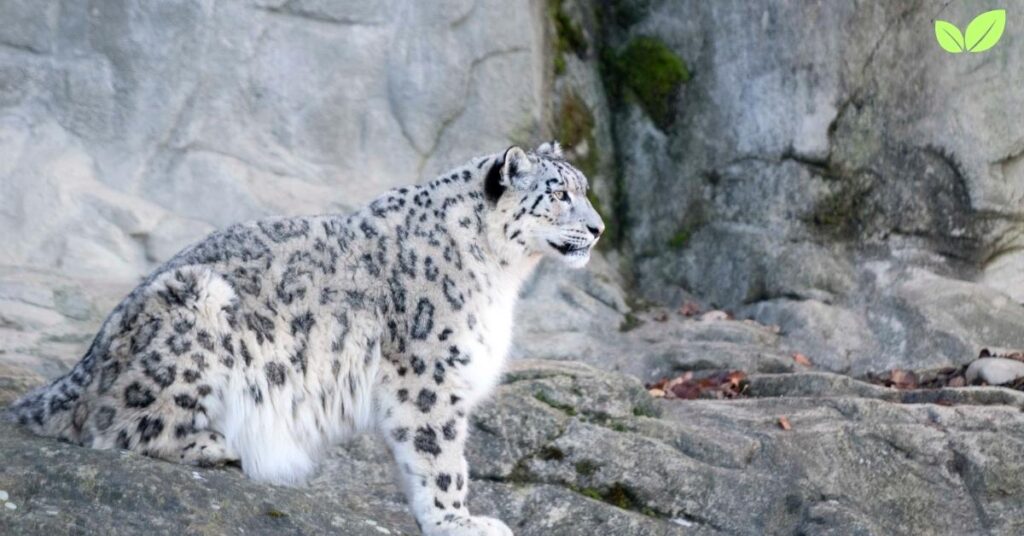
2.1. Preferred Habitat
Snow leopards inhabit a variety of mountainous terrains, from rocky cliffs to alpine meadows:
- Rocky Slopes and Cliffs: Ice leopards often prefer rocky outcrops, steep slopes, and cliff edges, where their agility and camouflage allow them to hunt effectively. These areas also provide safe dens for raising cubs and shelter from the elements.
- Alpine Meadows and Grasslands: In summer, snow leopards may move to alpine meadows, where they can find prey like wild sheep, goats, and smaller mammals that graze on the sparse grasses and shrubs. These areas are critical for maintaining prey populations during the warmer months.
- Coniferous Forests: In some regions, snow leopards are found in the transition zones between mountain forests and alpine tundra. Here, they may hunt forest-dwelling prey and use the dense vegetation for cover.
2.2. Climate and Environmental Conditions
- Temperature Tolerance: Snow leopards are adapted to survive in extremely cold temperatures, often facing conditions below -30°C (-22°F) during the winter months. Their thick fur, combined with a high-fat diet from prey, helps them endure these conditions.
- Seasonal Movement: Snow leopards exhibit seasonal migration patterns, moving to lower elevations during winter to follow prey that descends into valleys and returning to higher altitudes in the summer when the snow recedes. This seasonal movement helps them access food resources year-round while minimizing energy expenditure.
3. Diet and Hunting Behavior
The ice leopard is a carnivorous predator with a diet that primarily consists of large ungulates and smaller mammals. Its hunting strategies are adapted to the challenging terrain of its mountainous habitat, requiring patience, agility, and strength.
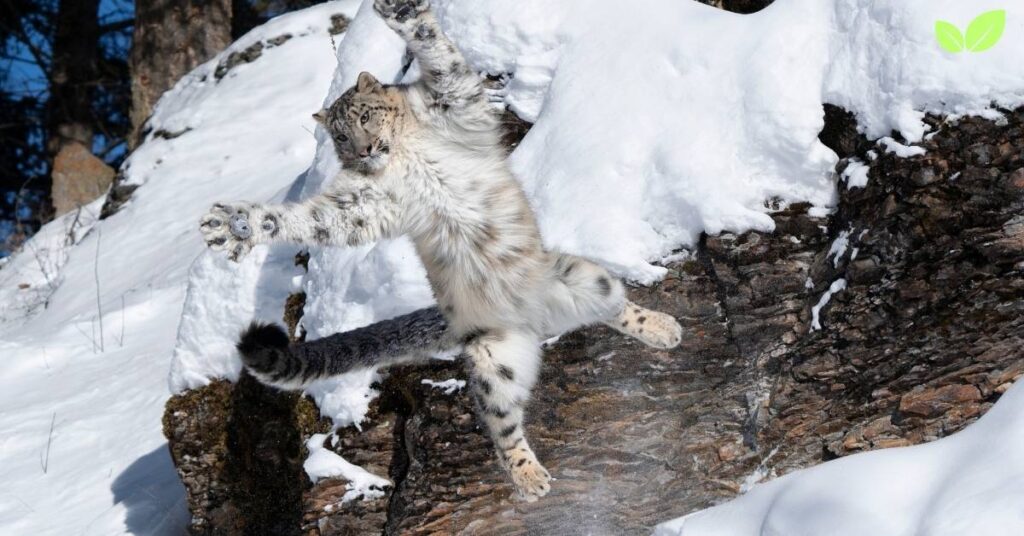
3.1. Primary Prey Species
Snow leopards are apex predators, relying on a variety of prey species that inhabit their mountainous territories:
- Large Ungulates: The primary prey of ice leopards includes large mountain ungulates such as the Himalayan blue sheep (bharal), Siberian ibex, markhor, and argali sheep. These herbivores are well adapted to the same high-altitude environments as the ice leopard, and they form a significant part of its diet.
- Smaller Mammals: Snow leopards also hunt smaller mammals like marmots, hares, and pikas, especially when larger prey is scarce. These smaller animals provide essential protein and fat, particularly during times when snow leopards are raising cubs.
- Livestock: In areas where their natural prey is depleted or scarce, snow leopards may turn to hunting livestock such as sheep, goats, and yaks. This behavior can lead to human-wildlife conflicts, as herders lose valuable livestock to predation.
3.2. Hunting Strategies and Techniques
- Ambush Predator: Ice leopards are ambush hunters, relying on stealth and the element of surprise to catch their prey. They use their camouflage to blend into the rocky terrain, creeping close before launching a powerful pounce that can cover distances of up to 50 feet (15 meters).
- Strength and Agility: The snow leopard’s strong, muscular limbs and large paws give it the power and balance needed to pursue prey across uneven, rocky terrain. Its long tail helps maintain stability during high-speed chases and sharp turns.
- Energy Conservation: In the harsh mountain environment, energy conservation is crucial for survival. Snow leopards hunt infrequently, aiming to take down large prey that can sustain them for several days. After a successful hunt, they may drag the carcass to a secluded spot, returning to feed on it over time.
4. Ecological Role of Snow Leopards
Ice leopards play a critical role in maintaining the balance of their ecosystems, contributing to the health and stability of mountain environments through their interactions with prey species and the physical landscape.
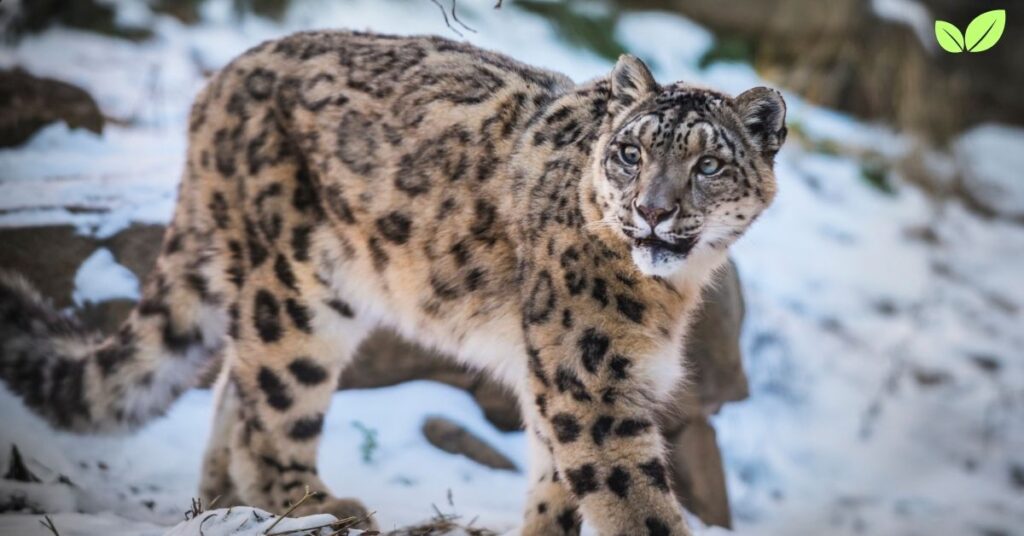
4.1. Role as a Keystone Species
Snow leopards are considered a keystone species in the mountainous ecosystems they inhabit:
- Regulating Prey Populations: As apex predators, snow leopards help regulate the populations of herbivores like blue sheep and ibex. By controlling these populations, snow leopards prevent overgrazing of alpine meadows, which helps maintain vegetation cover and prevents soil erosion.
- Supporting Biodiversity: The presence of snow leopards indicates a healthy, functioning ecosystem with sufficient prey populations and habitat diversity. Protecting snow leopards thus indirectly supports the conservation of a wide range of species that share their habitat.
4.2. Influence on Vegetation and Soil Health
- Impact on Vegetation Dynamics: By preying on herbivores, ice leopards influence the distribution and behavior of these animals, which in turn affects the growth and regeneration of plant communities. This trophic cascade helps maintain the balance between herbivores and plant life, ensuring that alpine meadows and shrublands remain healthy.
- Contribution to Nutrient Cycling: The carcasses left behind by ice leopards after feeding provide a source of nutrients for scavengers and decomposers like vultures, foxes, and insects. This contributes to nutrient cycling in the ecosystem, enriching the soil and supporting plant growth.
5. Challenges and Threats to Snow Leopard Populations
Despite their critical role in mountain ecosystems, Ice leopards face numerous threats that have led to their classification as a vulnerable species. Human activities, climate change, and habitat loss pose significant challenges to their survival.
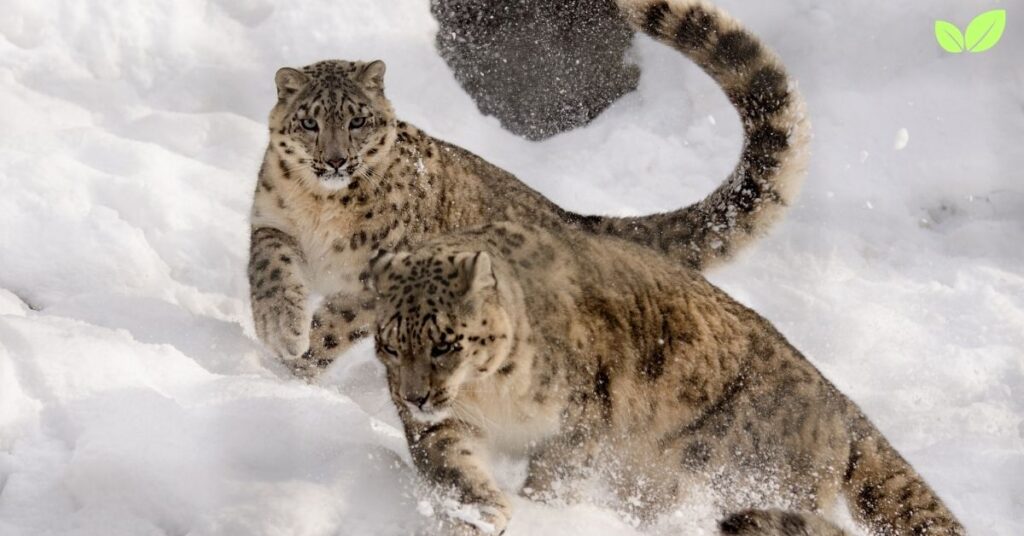
5.1. Poaching and Illegal Wildlife Trade
- Poaching for Fur and Bones: Snow leopards are often targeted by poachers for their thick, beautiful pelts, which are highly valued in the illegal wildlife trade. Additionally, their bones and other body parts are sometimes used in traditional medicine, further driving illegal hunting.
- Conflict with Livestock Owners: In regions where ice leopards prey on livestock, they are at risk of retaliatory killings by herders. The loss of livestock can have a significant economic impact on local communities, leading to tensions and conflicts with ice leopard conservation efforts.
5.2. Habitat Loss and Fragmentation
- Human Encroachment: As human populations expand into mountainous regions, snow leopard habitats are increasingly threatened by development, mining, and infrastructure projects. This encroachment reduces the available habitat for Ice leopards and their prey.
- Habitat Fragmentation: Roads, settlements, and barriers fragment snow leopard habitats, isolating populations and making it difficult for individuals to find mates or establish territories. This can reduce genetic diversity and make populations more vulnerable to extinction.
5.3. Climate Change Impacts
- Shrinking Habitat Range: Climate change poses a long-term threat to Ice leopards by altering the high-altitude ecosystems they depend on. Rising temperatures are causing the tree line to move upward, reducing the extent of alpine meadows and forcing both snow leopards and their prey into increasingly restricted areas.
- Impact on Prey Availability: Changes in temperature and precipitation patterns can affect the availability of vegetation for herbivores, leading to fluctuations in prey populations. This, in turn, can impact snow leopards, forcing them to travel longer distances for food or resort to hunting livestock.
6. Conservation Efforts and Sustainable Management
Numerous conservation organizations and local communities are working to protect snow leopards and ensure the long-term survival of these iconic big cats. Successful conservation requires a combination of habitat protection, anti-poaching measures, and community engagement.
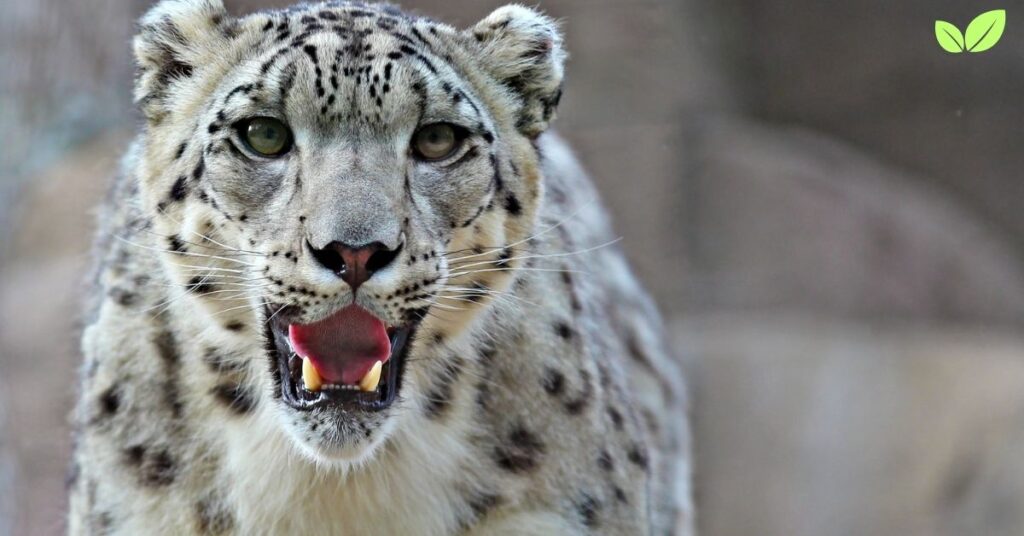
6.1. Protected Areas and Community Conservation
- Establishing Protected Areas: Creating protected areas and wildlife reserves in Ice leopard habitats is essential for safeguarding core populations and preventing habitat destruction. These reserves provide safe spaces for snow leopards to hunt and reproduce without the threat of human interference.
- Community-Based Conservation: Engaging local communities in snow leopard conservation is critical to reducing human-wildlife conflict. Programs that provide compensation for livestock losses, promote sustainable herding practices, and create alternative livelihoods can help build support for snow leopard protection.
- Ecotourism Initiatives: In some regions, ecotourism has become a valuable tool for Ice leopard conservation. By attracting tourists to see snow leopards in their natural habitat, local communities can benefit economically, creating a financial incentive to protect these big cats.
6.2. Anti-Poaching Measures and Research
- Monitoring and Anti-Poaching Patrols: Conservation organizations and governments have established anti-poaching patrols and monitoring programs to reduce illegal hunting of snow leopards. Using camera traps, GPS collars, and community reporting systems, these programs help track snow leopard populations and prevent poaching.
- Scientific Research: Research into snow leopard behavior, genetics, and ecology is crucial for informing conservation strategies. By understanding how snow leopards use their habitat, interact with prey, and respond to human activities, scientists can develop more effective management plans.
6.3. Climate Adaptation Strategies
- Restoring Habitat Connectivity: To counteract the effects of habitat fragmentation, conservationists are working to restore habitat corridors that allow snow leopards to move between isolated areas. These corridors facilitate gene flow and ensure that snow leopard populations remain viable.
- Addressing Climate Change: Tackling climate change through global efforts to reduce greenhouse gas emissions is essential for preserving the snow leopard’s high-altitude habitats. In the meantime, local adaptation strategies, such as water conservation and reforestation projects, can help mitigate some of the impacts on alpine ecosystems.
Conclusion
The snow leopard is a symbol of the wild, remote, and untamed nature of the world’s highest mountain ranges. As a keystone species, it plays an integral role in maintaining the health and balance of its ecosystem, from regulating prey populations to supporting the biodiversity of alpine habitats. However, the survival of Ice leopards is increasingly threatened by poaching, habitat loss, and climate change, challenges that require a concerted effort from governments, conservation organizations, and local communities.
Conserving the snow leopard is not only about saving a beautiful and iconic species; it is also about protecting the fragile mountain ecosystems that provide water, climate regulation, and resources for millions of people. Through continued research, habitat protection, and community-based initiatives, we can ensure that the “ghost of the mountains” continues to roam freely in the wild, embodying the spirit of the high-altitude realms it calls home. The future of the snow leopard depends on our ability to balance human needs with the preservation of nature, creating a world where both can thrive.
Read More: Bantam Chickens: A Comprehensive Exploration of Their Environmental Niche

